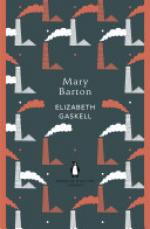|
This section contains 7,244 words (approx. 25 pages at 300 words per page) |

|
SOURCE: Surridge, Lisa. “Working Class Masculinities in Mary Barton.” Victorian Literature and Culture 28, no. 2 (2000): 331-43.
In the following essay, Surridge asserts that Gaskell presents working-class males as models of masculinity who are also caring and nurturing individuals, while mill owners are depicted as deficient in both nurturing skills and in manhood.
In considering the subject of masculinity in Mary Barton (1848), it is perhaps well to remember that Elizabeth Gaskell conceived the novel as being about a man. “‘John Barton’ was the original title of the book,” she wrote to Mrs. W. R. Greg early in 1849. “Round the character of John Barton all the others formed themselves; he was my hero, the person with whom all my sympathies went …” (Letters 42: 74). Gaskell's letter of 5 January 1849 to Miss Lamont reaffirms this: “‘John Barton’ was the original name, as being the central figure to my mind … in writing he was [?] my ‘hero...
|
This section contains 7,244 words (approx. 25 pages at 300 words per page) |

|


